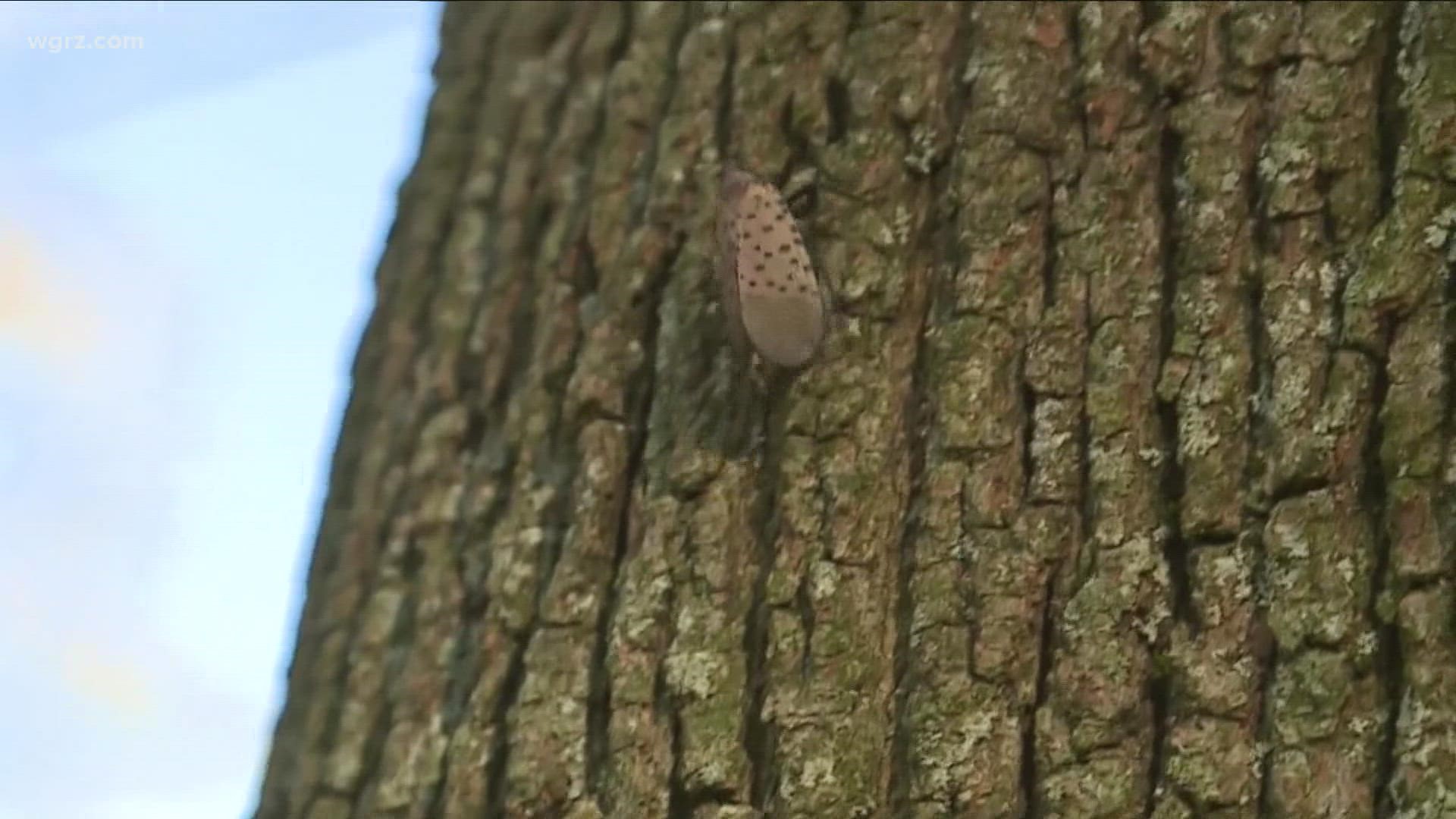PORTLAND, N.Y. — Add another item to the list of invasive species Western New York agriculture professionals will need to monitor this summer.
The Spotted Lanternfly has been identified at Sunshine Park in West Seneca, which has researchers at Cornell concerned.
"This lantern fly is a voracious feeder," Jennifer Phillips Russo said. "For instance, there was a vineyard down in southeast Pennsylvania that they discovered in 2017, and in 2019 that vineyard was dead."
Russo is the Lake Erie Regional Grape Program Team Leader and Viticulture Specialist at the Cornell Lake Erie Research and Extension Laboratory Regional Grape Program in Portland, New York.
Researchers believe the Spotted Lanternfly hitched a ride to the United States on a shipment of landscaping rocks from China sometime in 2014.
"The numbers just built up, we think in wooded areas, until we finally noticed it in vineyards in 2017," Russo said.
What has farmers, scientists, and wineries concerned is that Spotted Lanternfly feeds on grapes and other fruit trees, in addition to another invasive species, Tree of Heaven.
"Tree of Heaven also came from China and Southeast Asia," Russo said. "It was brought over here as an ornamental plant."
With Tree of Heaven also spreading throughout the nation, the Spotted Lanternfly spreads with it as a main food source.
"But if that's not available, its next favorite thing is grapes," Russo said. "It's also hops and apples, and we're talking wine, beer, and cider industries for New York State, not to mention the fresh markets."
The lifecycle of Spotted Lanternfly also makes it a concern for the grape industry. The eggs hatch between May and June and the Spotted Lanternfly becomes fully grown by August to September.
"There are four instars, and then the adult stage," Russo said. "First, second and third instar as it keeps growing is black with the white dots, you're most likely in our area at this time to be seen a black nymph with the white dots."
But then the Spotted Lanternfly changes to a vibrant red and black before maturing to its adult phase.
"I need to just make everybody aware that we do not have adults in New York State just yet," Russo said. "We are in the second third in maybe fourth instar, so it's going to look like a black little bug with white dots."
The Spotted Lanternfly feeds on the phloem of a plant, the tissue that transports nutrients within a plant that allows it to grow. It also leaves behind honeydew secretions which then promotes mold growth and expedites the death of crops.
So what do you do if you see one?
"I'm sorry, I know this seems a little bit cruel but uh, squish it don't move it, don't transport it, take a picture of it," Russo said. "Know your location and then you need to report it to the Department of Agriculture and Markets for New York State."
You can report a sighting here.
Russo says it's vital to keep an active eye on this insect because the impact on the $6.5 billion grape industry in New York could be uprooted if left uncontrolled.
"It could decimate our industry," Russo said.

